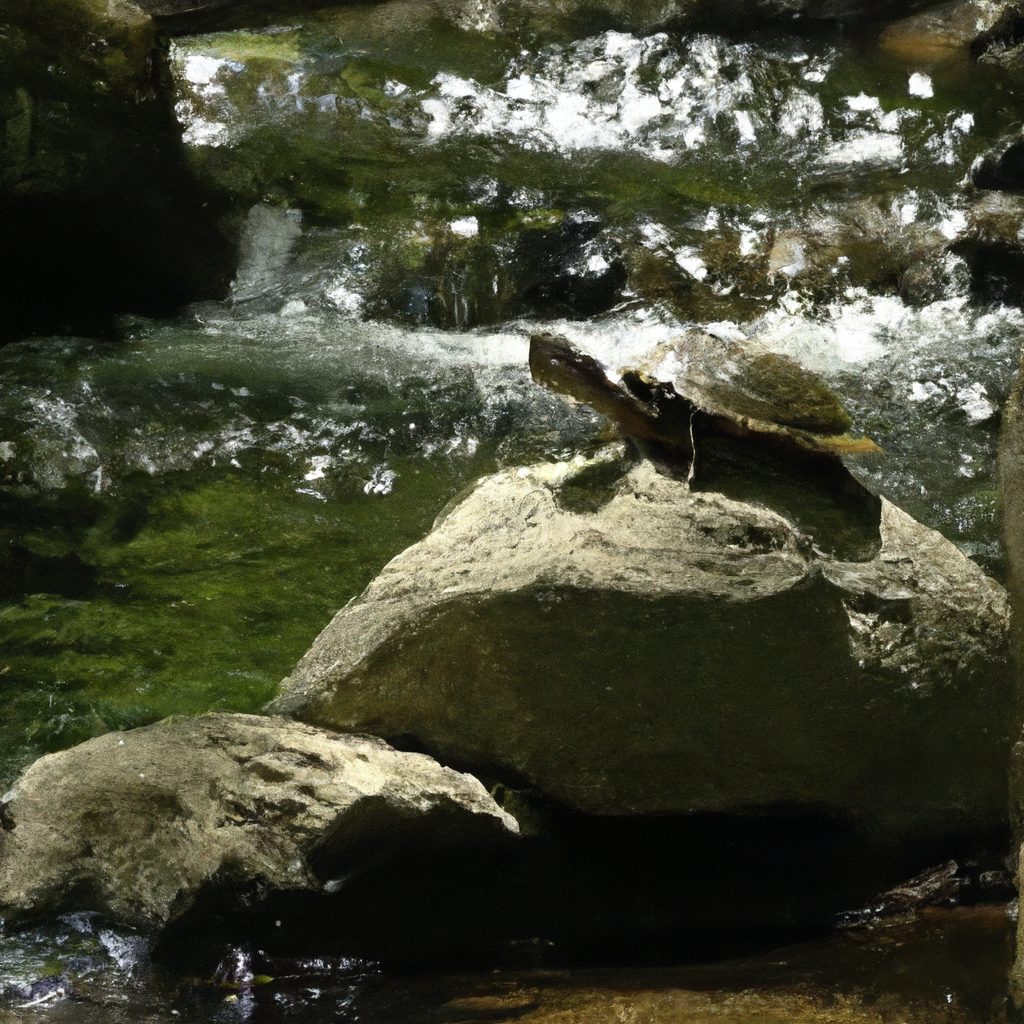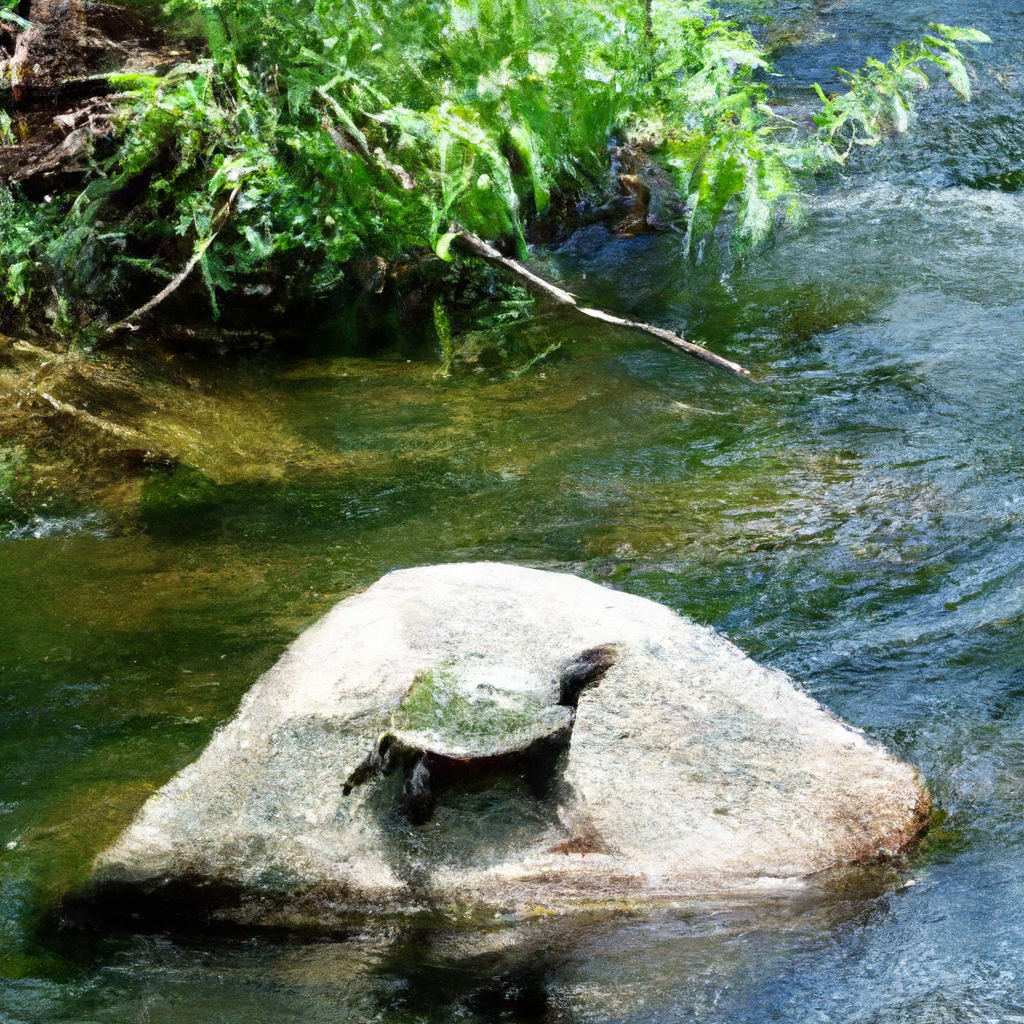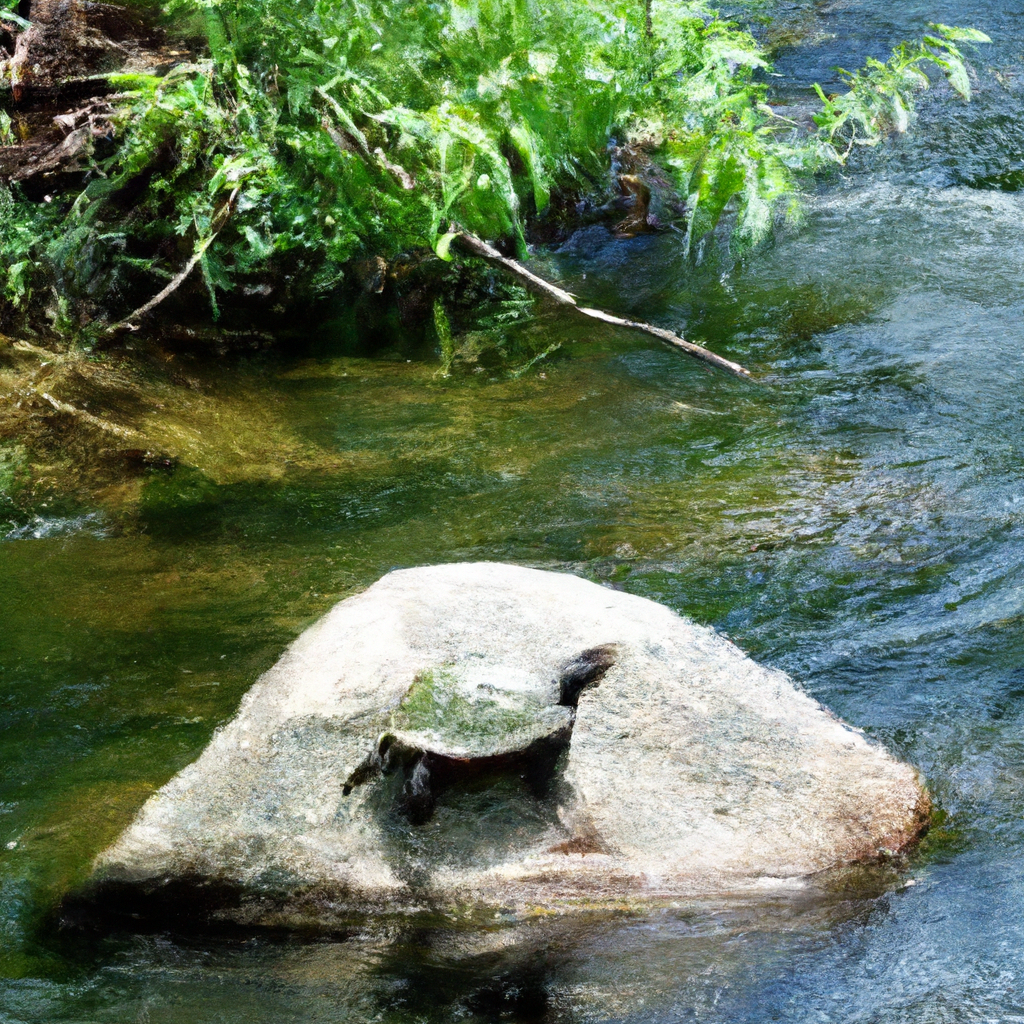So you’ve decided to bring a turtle into your home, but you’re not sure which species is the best fit for you. Well, look no further than the fascinating Map Turtle. These unique creatures are known for their distinct map-like markings on their shells, which give them their name. But it’s not just their appearance that sets them apart. In this article, we’ll delve into the care and habitat requirements of Map Turtles, giving you all the information you need to make an informed choice for your new reptilian friend.

Characteristics of the Map Turtle
Map turtles, scientifically known as Graptemys species, are a popular choice among turtle enthusiasts due to their unique physical characteristics and fascinating behaviors. These turtles are native to North America and are named after the intricate map-like patterns on their shells. They come in various species, each with its own distinct traits and habitat requirements. In this article, we will explore the key aspects of caring for a map turtle, including its physical characteristics, behavior and temperament, habitat requirements, tank setup, feeding, health and hygiene, handling and interaction, breeding and reproduction, as well as common map turtle species and how to choose the right one for you.
Physical Characteristics
Map turtles are relatively small-sized turtles, typically ranging from 3 to 12 inches in length, depending on the species. They have a unique shell pattern that resembles a topographical map, hence their name. The shell can vary in color, from olive green to brown or black, with intricate yellow or orange patterns. Their heads are usually elongated, with a pointed snout. Additionally, map turtles have webbed feet that are adapted for their primarily aquatic lifestyle.
Behavior and Temperament
Map turtles are known for their lively and active behavior. They are highly energetic and require ample swimming space to satisfy their innate need for exploration and exercise. These turtles are agile swimmers and often exhibit playful behavior when provided with an environment that mimics their natural habitat.
In terms of temperament, map turtles can be slightly skittish and wary of human interaction. However, with proper handling and socialization, they can become more accustomed to their owners and even display signs of bonding. It is important to approach and handle map turtles gently and avoid sudden or forceful movements, as they can become stressed or defensive.
Habitat Requirements
Creating a suitable habitat for your map turtle is crucial for its overall well-being and longevity. By replicating their natural environment as closely as possible, you can ensure that your turtle is healthy and content.
Aquatic Environment
Map turtles are primarily aquatic creatures, so providing a spacious and well-maintained aquatic environment is essential. A large aquarium or pond is ideal for housing these turtles, as they require ample space for swimming and basking. The water should be deep enough for the turtle to fully submerge and swim comfortably.
Basking Area
In addition to the aquatic environment, map turtles require a designated basking area. This area should be easily accessible and provide a dry and elevated space for the turtle to rest and regulate its body temperature. Basking areas can be created using rocks, logs, or commercial turtle basking platforms. It is crucial to ensure that the basking spot is heated adequately to provide the turtle with the necessary warmth.
Filtration and Lighting
Maintaining clean and clear water is vital for the health of your map turtle. Investing in a high-quality filtration system will help remove debris and waste, keeping the water free from harmful bacteria and maintaining optimal water quality. Additionally, providing UVB lighting is essential, as it helps turtles synthesize vitamin D3, which aids in calcium absorption, promoting strong and healthy shells.
Water Temperature and Quality
Map turtles require specific water temperatures to thrive. The ideal water temperature range for map turtles is typically between 75 and 85 degrees Fahrenheit (24-29 degrees Celsius). It is crucial to monitor the water temperature consistently, as deviations from this range can impact the turtle’s health. Additionally, regularly testing the water quality using appropriate test kits and maintaining proper pH levels is vital to prevent water-related health issues.
Land Area
Although map turtles are primarily aquatic, they also require access to a land area within their habitat. This land area can be small but should provide enough space for the turtle to rest or bask. It is crucial to keep the land area clean and dry to prevent any bacterial growth and maintain the turtle’s hygiene.

Tank Setup
Building a suitable tank setup for your map turtle involves carefully considering factors such as tank size, substrate, decoration, and water depth.
Tank Size
The tank size for your map turtle should be based on the size and species of the turtle. As a general guideline, a tank with a minimum capacity of 40 gallons is recommended for average-sized map turtles. However, larger species might require larger tanks or outdoor ponds for optimal living conditions. It is important to provide ample swimming space for your turtle while also leaving enough room for the basking area.
Substrate
Choosing the right substrate is crucial for the hygiene and comfort of your map turtle. Gravel or small pebbles can be used as a substrate, as they are easy to clean and mimic the natural riverbed habitat of map turtles. Avoid using small rocks or sand, as these can be accidentally ingested and lead to health issues.
Decoration and Hiding Places
Adding decorations and hiding places to the tank will help create a stimulating and enriching environment for your map turtle. Rocks, logs, and aquatic plants can be used to provide hiding places and create a more naturalistic setting. Ensure that the decorations are securely in place and do not pose any hazards to the turtle.
Water Depth and Land Ratio
Maintaining the appropriate water depth and land ratio is crucial for the overall well-being of your map turtle. The water depth should be deep enough for the turtle to swim and submerge fully. However, it is important to provide a gradual incline or a ramp to ensure that the turtle can easily access the basking area. The land area should be elevated, dry, and spacious enough for the turtle to comfortably rest or bask.
Feeding
A balanced and nutritious diet is vital for the health and well-being of your map turtle. Providing a varied diet that mimics their natural feeding habits is essential for their overall growth and vitality.
General Diet
Map turtles are omnivorous, meaning they consume both plant-based and animal-based foods. Their diet consists of a combination of aquatic plants, leafy greens, insects, small fish, and occasional fruits. A varied diet is crucial to ensure that your turtle receives all the necessary nutrients.
Specific Food Items
Aquatic plants such as duckweed, water lettuce, and water hyacinth can be offered to your map turtle. Additionally, leafy greens like kale, collard greens, and dandelion greens should be provided regularly. In terms of animal-based foods, small feeder fish, earthworms, crickets, and mealworms can be offered as sources of protein. It is essential to prepare the food items appropriately and ensure that they are of high quality to avoid potential health issues.
Feeding Frequency and Portion Sizes
Map turtles should be fed daily or every other day, depending on their size and age. Younger turtles require more frequent feedings, while adults can be fed less frequently. It is important to monitor your turtle’s weight and adjust the portion sizes accordingly to avoid overfeeding or underfeeding. Providing small, bite-sized food items that are appropriate for the turtle’s mouth size is recommended.
Health and Hygiene
Maintaining the health and hygiene of your map turtle is crucial for its overall well-being and longevity. By proactively addressing common health issues and ensuring a clean and optimal living environment, you can significantly enhance your turtle’s quality of life.
Common Health Issues
Map turtles are susceptible to various health issues, including shell rot, respiratory infections, parasites, and vitamin deficiencies. Shell rot can occur if the shell is injured or not kept clean and dry. Respiratory infections can develop if the turtle is exposed to cold temperatures or poor water quality. Parasites, such as internal worms or external mites, can also affect your turtle’s health. Vitamin deficiencies, especially vitamin D3 deficiency, can lead to metabolic bone disease and shell deformities. Regular health check-ups with a reptile veterinarian and proper care can help prevent and address these health issues effectively.
Preventing Diseases
Maintaining a clean and well-maintained habitat is vital for preventing common diseases in map turtles. Regularly cleaning the tank, removing uneaten food, and monitoring water quality parameters such as temperature, pH level, and ammonia levels will help prevent bacterial and fungal growth. Additionally, providing appropriate UVB lighting and a balanced diet will contribute to your turtle’s overall health and disease prevention.
Water Quality and Hygiene
Ensuring optimal water quality is paramount for the health of your map turtle. Regularly testing the water parameters using appropriate test kits is essential. Adequate filtration, water changes, and the removal of debris and uneaten food will help maintain the cleanliness of the water. It is important to use dechlorinated water for changing and refilling the tank and avoid using any chemicals or cleaning agents that could harm your turtle.
Handling and Interaction
Proper handling techniques are crucial for the well-being and safety of your map turtle. While map turtles may not necessarily enjoy being handled, it is important to approach the turtle with care and respect its boundaries.
Proper Handling Techniques
To properly handle your map turtle, it is important to approach slowly and gently. Using both hands, support the turtle’s body, ensuring that it feels secure and comfortable. Avoid grabbing the turtle by its shell or limbs, as this can cause stress or injury. It is essential to wash your hands before and after handling to minimize the risk of transferring bacteria or pathogens to the turtle or vice versa.
Bonding with Your Map Turtle
Building a bond with your map turtle takes time and patience. Regular, gentle interactions and providing a positive and secure environment will help the turtle become more comfortable and accustomed to your presence. Offering food by hand, speaking softly, and spending time near the tank can contribute to the bonding process. However, it is important to remember that map turtles may never become as affectionate as other pets, such as dogs or cats.
Breeding and Reproduction
Breeding map turtles can be a fascinating and rewarding experience for turtle enthusiasts. Understanding their mating behavior, nesting habits, and caring for hatchlings is crucial for successful reproduction.
Mating Behavior
Map turtles exhibit intricate courtship behavior during the breeding season. Male turtles often engage in elaborate displays to attract females, which may involve head bobbing, swimming around the female, or even gentle bites. Once a male successfully courts a female, they will mate in the water. Female map turtles can store sperm for several months and opt to lay eggs at a later time if environmental conditions are not ideal.
Nesting and Egg Incubation
Female map turtles typically lay their eggs on land, seeking suitable nesting sites away from water bodies. The number of eggs laid can vary, depending on the species and the size of the female. The eggs are usually buried in a shallow hole and covered with soil or sand. The duration of incubation can range from 50 to 90 days, with temperature influencing the gender of the hatchlings. Warm temperatures generally result in female hatchlings, while colder temperatures tend to produce male hatchlings.
Caring for Hatchlings
Once the hatchlings emerge from their eggs, it is important to provide proper care and a suitable environment for their growth and development. Hatchlings are often delicate and require specific conditions to thrive. A separate enclosure with appropriate heating, lighting, and a shallow water source should be prepared for the hatchlings. Additionally, offering appropriate food items and monitoring their growth and development are vital for their overall well-being.
Common Map Turtle Species
There are several species of map turtles, each with its own unique characteristics and habitat requirements. Let’s take a closer look at three common map turtle species:
Northern Map Turtle (Graptemys geographica)
The Northern Map Turtle is characterized by its prominent keel on the upper shell, which gives it a ridged appearance. They are primarily found in the freshwater habitats of the eastern and central regions of North America. These turtles prefer slow-moving rivers, streams, and lakes with abundant vegetation.
False Map Turtle (Graptemys pseudogeographica)
The False Map Turtle closely resembles the Northern Map Turtle, but with a smoother shell and less distinct keel. They are native to the central and southern regions of North America, inhabiting rivers and streams with rocky bottoms. Like other map turtles, they require access to both water and land areas.
Mississippi Map Turtle (Graptemys kohnii)
The Mississippi Map Turtle is one of the most colorful map turtle species, with vibrant yellow and red markings on its shell and skin. They are primarily found in the river systems of the southeastern United States. These turtles prefer areas with strong currents, abundant vegetation, and sandy or muddy bottoms.
Choosing a Map Turtle
When choosing a map turtle, there are several factors to consider, including species suitability, health, activity level, and legal considerations.
Species Suitability
Different map turtle species have varying habitat and care requirements. It is essential to research and understand the specific needs of the species you are interested in to ensure that you can provide an appropriate environment and meet their needs effectively.
Health and Activity Level
When selecting a map turtle, it is important to choose a healthy and active individual. Look for turtles with clear eyes, intact shells, and no signs of injury or illness. Observe the turtle’s behavior and ensure that it displays normal activity levels, swimming, and basking regularly.
Legal Considerations
Before acquiring a map turtle, it is crucial to understand and comply with legal regulations concerning turtle ownership in your area. Some map turtle species may be protected or require permits for ownership. Research the local laws and consult with local authorities or reptile experts to ensure that you are compliant with the legal requirements.
Conclusion
Caring for a map turtle requires careful consideration of their physical characteristics, behavior, and specific habitat requirements. By providing a suitable environment, a balanced diet, proper health and hygiene care, and respectful handling, you can ensure the well-being and longevity of your map turtle. Researching the specific needs of different map turtle species and understanding legal considerations will help you choose the right turtle for your lifestyle and ensure a rewarding experience as a turtle owner.
